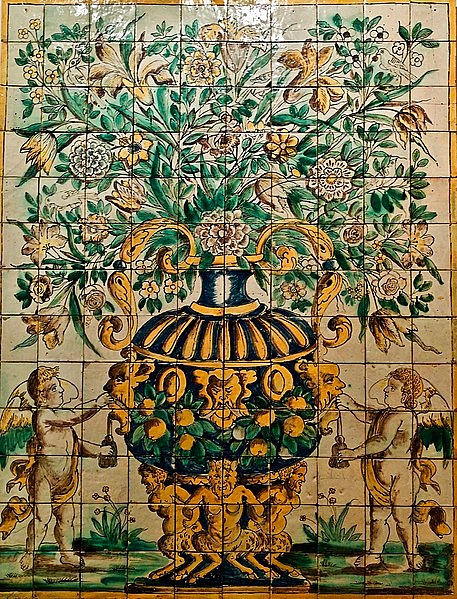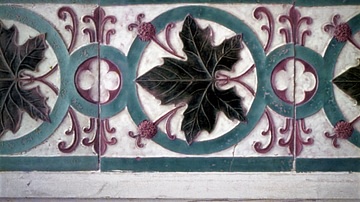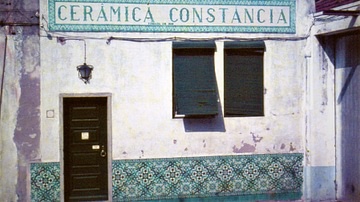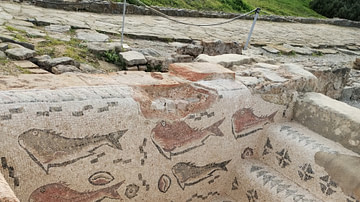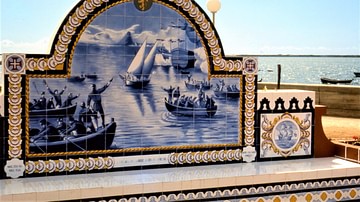Illustration
A polychrome faience azulejo (or glazed ceramic tile) showing a vase of flowers with cherubim. This tile is typical of designs influenced by Portugal's overseas colonies and territories. The tile is from Nossa Senhora da Esperança Convent, Lisbon Portugal and was made in the 17th century CE. This image was taken in 2018 CE.
Cite This Work
APA Style
Simões, P. R. (2019, September 27). Portuguese Ceramic Tile. World History Encyclopedia. Retrieved from https://www.worldhistory.org/image/11279/portuguese-ceramic-tile/
Chicago Style
Simões, Pedro Ribeiro. "Portuguese Ceramic Tile." World History Encyclopedia. Last modified September 27, 2019. https://www.worldhistory.org/image/11279/portuguese-ceramic-tile/.
MLA Style
Simões, Pedro Ribeiro. "Portuguese Ceramic Tile." World History Encyclopedia. World History Encyclopedia, 27 Sep 2019, https://www.worldhistory.org/image/11279/portuguese-ceramic-tile/. Web. 02 Jul 2025.
